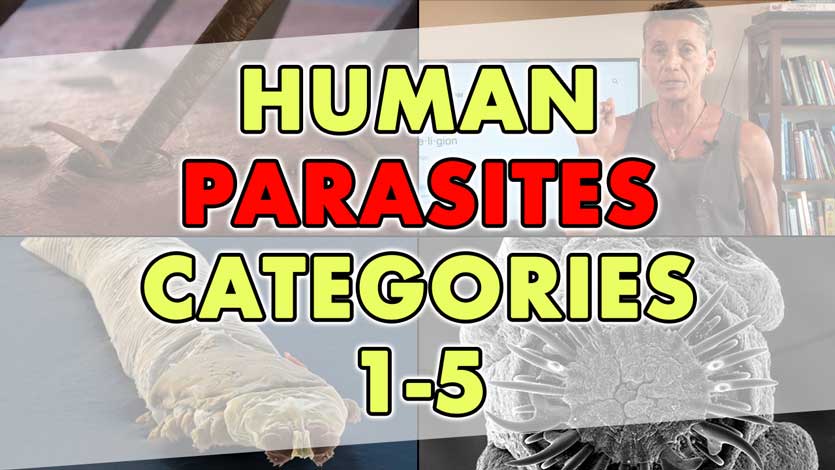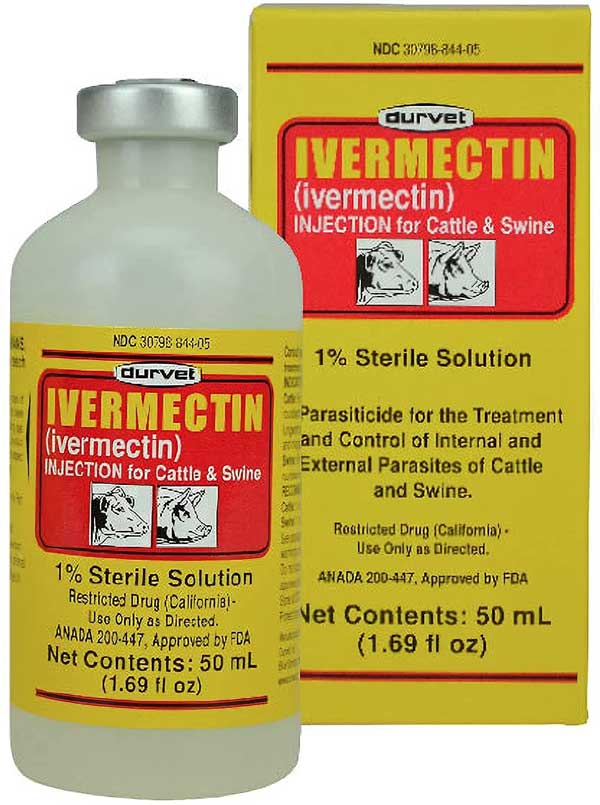
In this Earther Academy video I am going to show you the Live Parasite I found in the feces of one of the 18 sheep we have on the farm, after I wormed them with the well known anti-parasitic medication called Ivermectin.
You might not have heard of the drug Ivermectin, but if you have animals I am sure you have used this medication on your dogs, cats or livestock to deworm them, or to treat them for a variety of parasitic infections.
This medication can be bought at most any livestock feed store, or on the internet for a variety of animals. If you have an animal of any type you probably have gotten them wormed with Ivermectin.
The following day after I wormed the sheep, I found this parasitic creature entangled in the feces on a freshly dropped loose stool.
The live wormlike/snake parasite was elongated and wrapped around the feces, moving very slowly when I noticed it. Once I touched the parasite with a small stick, the creature shrank up to about 2 inches from the over 1ft it was when wrapped in the feces.
I should have gotten my camera right away to film and document the worm in the poop, but I was in the lower pasture without my camera – so, I captured it and brought it back to the house for investigation and to have a closer look at this bizarre parasitic creature.
Important Concepts To Understand About Parasites
Once you start studying parasites you see they are truly bizarre creatures indeed. These parasitic creatures have been known to invade all forms and developmental stages of biological life.
Most doctors are not familiar with parasites or the treatment and diagnosis that would go along with the infection of humans, but what I found is the veterinary doctors understand much more than the human doctors when treating parasites, and the hidden sicknesses they can cause with the wrong diagnosis.
Sheep are solely herbivores, which mean they only eat plants and don’t eat any flesh other than small bugs, insects, grubs and a variety of parasites that may be in the soil or grass when eating.
Most people think you can only get parasites from just eating meat or infected flesh, but this statement and idea is completely false.
As far as livestock is concerned, most veterinarians will recommend that cattle, horses, sheep, goats around the world should be wormed 2 times a year, as a necessary maintenance to keep the animals healthy from a variety of parasites from infection.
The animals will most likely get parasitically infected from just eating pasture grass, or from the contamination of feces to other animals and humans.
Veterinarians also suggest deworming any domesticated pets of any kind such as cats, dogs, birds, turtles, pet rats/mice and reptiles, and even fish should be treated with anti-parasitic medication 2-3 times a year.
In my opinion, the moral of the story is; anyone (human) or any creature can become infected by a variety of parasites, whether you eat meat or not.
Parasites may be able to infect any creature, including but not limited to humans.
Parasites are probably one of the most unknown/elusive invasive disease making creatures for all forms of biology in existence.
Definition of a Parasite
Parasites will always require a host organism of another species to survive, living on or inside their host.
Parasites are plants or animals that live on, or in a host, getting their nutrients from that host. A host is an organism of any type that can support the life of a parasite. Sometimes the host can be harmed by the invasive parasite, and sometimes the relationship is neutral but the host never benefits from the arrangement ever.
Parasites are of ZERO benefit for any creature to be infected by them.
Parasites pollute the host internally and systemically with the very toxic feces they excrete in the body of the infected, and in time can kill the host from a variety of stressors.
Part of the lifecycle of most parasites is to reproduce in the body, and defecate the eggs and juvenile larva into the soil for other animals to pick up from the grass from infected feces.

Recommended Further Study: Human Parasites Categories 1-5
What Is Ivermectin?
“Ivermectin is an antiparasitic drug. After its discovery in 1975, its first uses were in veterinary medicine to prevent and treat heartworm and acariasis. Approved for human use in 1987, today it is used to treat infestations including head lice, scabies, river blindness, strongyloidiasis, trichuriasis, ascariasis and lymphatic filariasis.
It works through many mechanisms to kill the targeted parasites, and can be taken orally, or applied to the skin for external infestations. It belongs to the avermectin family of medications. William Campbell and Satoshi Ōmura won the 2015 Nobel Prize in Physiology or Medicine for its discovery and applications. It is on the World Health Organization’s List of Essential Medicines, and is approved by the U.S. Food and Drug Administration as an antiparasitic agent.
In 2018, it was the 420th most commonly prescribed medication in the United States, with more than 100,000 prescriptions. It is available as a generic medicine.”
src: Wikipedia
I strongly recommend reading the article below, published by the National Institute of Health (NIH) and the National Library of Medicine (NIM), about this incredible discovery that Japan calls a “Wonder Drug”.
Ivermectin, ‘Wonder drug’ from Japan: the human use perspective
Read up on this incredible discovery in 1975 in a single organism found in the soil of Japan, that positively changed the world for the better for both animals and humans to combat a variety of compromising parasitic diseases, found both in humans and animals.
Article Abstract, Introduction and Mode of Action of Ivermectin
Abstract:
“Discovered in the late-1970s, the pioneering drug ivermectin, a dihydro derivative of avermectin—originating solely from a single microorganism isolated at the Kitasato Intitute, Tokyo, Japan from Japanese soil—has had an immeasurably beneficial impact in improving the lives and welfare of billions of people throughout the world. Originally introduced as a veterinary drug, it kills a wide range of internal and external parasites in commercial livestock and companion animals.
It was quickly discovered to be ideal in combating two of the world’s most devastating and disfiguring diseases which have plagued the world’s poor throughout the tropics for centuries. It is now being used free-of-charge as the sole tool in campaigns to eliminate both diseases globally. It has also been used to successfully overcome several other human diseases and new uses for it are continually being found.
This paper looks in depth at the events surrounding ivermectin’s passage from being a huge success in Animal Health into its widespread use in humans, a development which has led many to describe it as a “wonder” drug.”
Introduction:
“There are few drugs that can seriously lay claim to the title of ‘Wonder drug’, penicillin and aspirin being two that have perhaps had the greatest beneficial impact on the health and wellbeing of Mankind.
But ivermectin can also be considered alongside those worthy contenders, based on its versatility, safety and the beneficial impact that it has had, and continues to have, worldwide—especially on hundreds of millions of the world’s poorest people.”
Mode of Action of Ivermectin
Mode of Action:
“Initially, researchers working on the development of ivermectin believed that it blocked neurotransmitters, acting on GABA-gated Cl− channels, exhibiting potent disruption at GABA receptors in invertebrates and mammals.
GABA is recognised as the primary inhibitory neurotransmitter in the somatic neuromuscular system of nematodes. Subsequently, they discovered that it was in fact glutamate-gated Cl− channels (GUCl−) that were the target of ivermectin and related drugs.”
This discovery opened up a completely new spectrum of possibilities, as these channels, although playing fundamental roles in nematodes and insects, are not accessible in vertebrates.) Ivermectin, while paralyzing body-wall and pharyngeal muscle in nematodes has no such impact in mammals, as it cannot cross the blood-brain barrier into the mammalian Central Nervous System, where GABA receptors are located.
For a long time, it was believed that ivermectin was contra-indicated in children under the age of five or who weighed less than 5 kg, as there was a fear of neurotoxicity, the drug possibly being able to cross the as yet not fully developed blood/brain barrier.
However, evidence has emerged that is probably not the case.”
Quotes from – “Ivermectin, ‘Wonder drug’ from Japan: the human use perspective
Ivermectin Protocols I use on Sheep and Cattle
If you are not familiar with ivermectin, always consult your veterinarian or qualified medical/health professional before administering Ivermectin to your livestock or pets.
To deworm sheep, cattle, goats and most other mammals; the manufacturer of Ivermectin recommends a 1% liquid solution of Ivermectin, a dose rate of 1cc or 1ml per 110 pounds of body weight. I bought the 1% Ivermectin product on Amazon for about $40.- for a 50 cc bottle.
Durvet Ivermectin Injectable 50 mL
There are several brands to choose from. This is one of the brands I am using to deworm the Sheep, goats and cattle.
Manufacturer Dosage Information I Use
For example; the dose I am using currently is recommended in the instructions on the label of the medication (see above). If I am going to worm a 110 pound animal I would remove 1cc (or 1ml) of Ivermectin with a 3 ml syringe using a 22 gauge needle. The medication can be taken orally or by subcutaneous injection. Ivermectin can also be absorbed through the skin.
I always give the medication to my animals either orally or topically, on the back of the animal to absorb through the skin if the sheep are hairless. In most cases, I usually always administer Ivermectin orally.
Below is another brand of Ivermectin I use, for smaller 20-100 pound animal doses.
The Sheep Drench is a diluted version of Ivermectin and less potent, and easier to dose smaller animals versus the 1% Ivermectin in the 50cc bottle which is much more concentrated, – so you would use much less.
The dosage for the sheep drench is 3 ml Ivermectin per 26 pounds of body weight, and the dose rate for 1% strength Ivermectin is 1 ml per 110 pounds of body weight.
Durvet Ivermectin Sheep Drench
2 Pieces Goats Syringe with 2 Drench Nozzle
Ivermectin works incredibly quickly, and you may see worms/loose stools in the feces of your animals the next day.
Even if you do not see any visible parasites, there are many species of micro-parasites that Ivermectin has been found to be effective in reducing, or eradicating.
Micro-parasites are very small and are not visible to the naked eye, so you will need a microscope to see the parasite larva and their eggs in the feces.
Usually, I will worm the sheep, cattle, goats etc. 1 time per month for a 3 month period, then 1 time every 3-6 months for maintenance.
Understanding Parasites, Anti-Parasitic Meds and Effective Treatment Protocols
Keep an eye out for another Earther Academy private video course I am finishing called “Understanding Parasites, Anti-Parasitic Meds and Effective Treatment Protocols” (Signup For Our Newsletter), which I have been using for years for the effective reduction or eradication of a variety of species of parasites.
This private course is a multi part Earther Academy video course, and I will show you a variety of disease causing parasites that are in both animals and humans.
I will also be going over some very effective anti-parasitic medications, as well as other treatment protocols and doses I have personally used for several years with excellent results and very little side effects other than mild stomach ache and seeing lots of parasites in the toilet.
Over the last 40+ years of researching and experimenting with a variety of parasites, both personally and in practice with patients, – I now prefer calling all types of parasites “Demons or Demonic Entities” because of their true nature of causing biological destruction over time, and the highjacking of the minds and actions.
These parasites have been found to easily control the infected hosts’ biology without them knowing it at all.
Many types of parasites can cause mild to severe, or acute to chronic disease, eventually leading to sickness and even death in humans, animals, mammals, insects, amphibians and other creatures.
In my opinion, all domesticated animals including people have parasites, and it is recommended to learn, experiment, research and practice anti-parasitic protocols for general maintenance and sickness.
For further research study the detoxification courses on Earther Academy to learn more.
Hope you enjoy this “Monster Parasite Came Out Of My Sheep’s Feces!” Video 🙂
Dr. Robert



